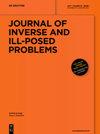Artificial intelligence for COVID-19 spread modeling
IF 0.9
4区 数学
Q2 MATHEMATICS
引用次数: 0
Abstract
This paper presents classification and analysis of the mathematical models of the spread of COVID-19 in different groups of population such as family, school, office (3–100 people), town (100–5000 people), city, region (0.5–15 million people), country, continent, and the world. The classification covers major types of models (time-series, differential, imitation ones, neural networks models and their combinations). The time-series models are based on analysis of time series using filtration, regression and network methods. The differential models are those derived from systems of ordinary and stochastic differential equations as well as partial differential equations. The imitation models include cellular automata and agent-based models. The fourth group in the classification consists of combinations of nonlinear Markov chains and optimal control theory, derived by methods of the mean-field game theory. COVID-19 is a novel and complicated disease, and the parameters of most models are, as a rule, unknown and estimated by solving inverse problems. The paper contains an analysis of major algorithms of solving inverse problems: stochastic optimization, nature-inspired algorithms (genetic, differential evolution, particle swarm, etc.), assimilation methods, big-data analysis, and machine learning.用于 COVID-19 传播建模的人工智能
本文对 COVID-19 在家庭、学校、办公室(3-100 人)、城镇(100-5000 人)、城市、地区(50-1500 万人)、国家、大陆和世界等不同人群中传播的数学模型进行了分类和分析。分类包括主要的模型类型(时间序列模型、微分模型、模仿模型、神经网络模型及其组合)。时间序列模型是基于使用过滤、回归和网络方法对时间序列进行分析。微分模型是从常微分方程、随机微分方程和偏微分方程系统中导出的模型。模仿模型包括细胞自动机和基于代理的模型。分类中的第四组包括非线性马尔可夫链和最优控制理论的组合,由均值场博弈论的方法得出。COVID-19 是一种复杂的新型疾病,大多数模型的参数通常是未知的,需要通过求解逆问题来估计。论文分析了解决逆问题的主要算法:随机优化、自然启发算法(遗传、微分进化、粒子群等)、同化方法、大数据分析和机器学习。
本文章由计算机程序翻译,如有差异,请以英文原文为准。
求助全文
约1分钟内获得全文
求助全文
来源期刊

Journal of Inverse and Ill-Posed Problems
MATHEMATICS, APPLIED-MATHEMATICS
CiteScore
2.60
自引率
9.10%
发文量
48
审稿时长
>12 weeks
期刊介绍:
This journal aims to present original articles on the theory, numerics and applications of inverse and ill-posed problems. These inverse and ill-posed problems arise in mathematical physics and mathematical analysis, geophysics, acoustics, electrodynamics, tomography, medicine, ecology, financial mathematics etc. Articles on the construction and justification of new numerical algorithms of inverse problem solutions are also published.
Issues of the Journal of Inverse and Ill-Posed Problems contain high quality papers which have an innovative approach and topical interest.
The following topics are covered:
Inverse problems
existence and uniqueness theorems
stability estimates
optimization and identification problems
numerical methods
Ill-posed problems
regularization theory
operator equations
integral geometry
Applications
inverse problems in geophysics, electrodynamics and acoustics
inverse problems in ecology
inverse and ill-posed problems in medicine
mathematical problems of tomography
 求助内容:
求助内容: 应助结果提醒方式:
应助结果提醒方式:


